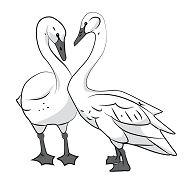While I remain focused on chores I still have to do in the garden, before the weather puts an end to my endeavors, I must occasionally stop to survey all that I have accomplished. In just four months, I have transformed a small space of a handful of weed species and sickly grass, into a thriving polyculture. The soil here is the worst I have ever encountered. It consists mostly of rock, ranging from pea sized to as large as a cantaloupe. Almost completely devoid of life, except for an occasional worm found several inches below the surface, it seemed almost futile to attempt making a garden. The only insects that I encountered were emerging grasshoppers, pill bugs, and a slew of house flies. Where, I wondered, were the bees?
Having learned from past experience that cardboard alone does not inhibit grass and weeds for long, I hand weeded the entire 400 square foot backyard. I added soil amendments and designed in-ground garden areas for perennials, herbs, and vegetables. Slowly, but surely, the pollinators and predatory insects began to arrive. It was not until late August that I finally saw, to my delight, a bumblebee.
During my spare time I have been reading about hymenoptera (bees, wasps, and ants.) I now have a much better understanding of these indispensable garden companions. For instance, I now know that it is the bumblebee, not the honey bee, that provides pollination for tomato plants. And, it is most likely the reason my one tomato plant, that was loaded with blossoms, never produced tomatoes. I had not had the time to begin tomatoes from seed, as usual; so I purchased one on clearance in late spring. I did get plenty of green beans, loads of cucumbers, and of course, an ample supply of zucchini. Having come to understand more about pollinators and the vital service that they provide (for free) I am seeing my insects in a whole new way. I learned that bees have 5 eyes! I learned that you can tell a male bee from a female by the number of segments on its abdomen (7 for males and 6 for females.) It is only the females that sting and only a few species that sting. The males often die after mating, which is their sole purpose in life. Some species, like the honey bee, are social; but many are solitary. Certain plants require host-specific pollinators because they have just the right size and shape mouthpart to access the nectar and pollen within the flower. In other words, it takes several different plants to satisfy a variety of different insects, thus the importance of planting many different plants together.
My own yard now boasts over 45 different plants. In a couple of weeks I will be adding six spring blooming flower bulbs, and also garlic, to keep my insects happy and provide them with plenty of food when they emerge in the spring. I have transformed this yard, this monoculture of grass that is surrounded on all sides by more monocultures of grass, into one that is literally buzzing with life. If I can heal this small, damaged space all by myself, think what a lot of people could do for our planet, with a little effort. When we give Nature a chance, she can rebound at a startling pace. We just need to invite her back.
5 OCTOBER 2023 REBOUNDING NATURE
This entry was posted in OCTOBER 2023. Bookmark the permalink.



